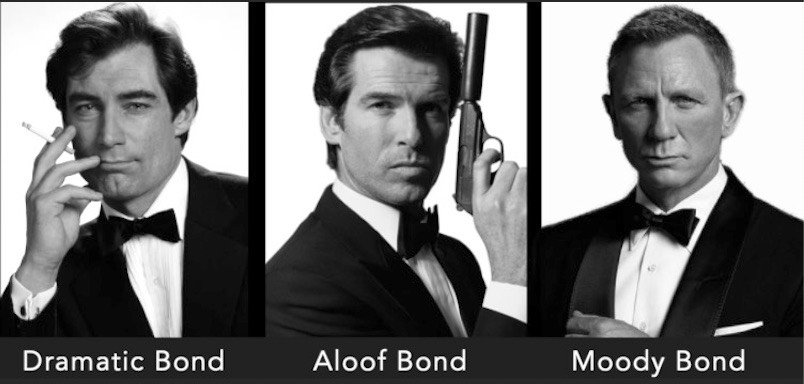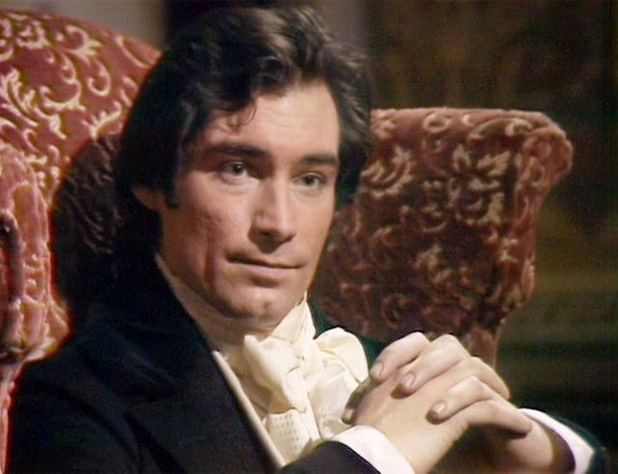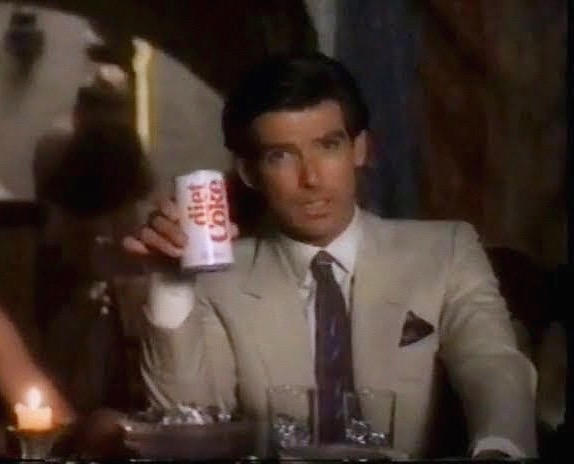Shades of Difference

I was excited to learn that Timothy Dalton was in contention to play James Bond when Roger Moore turned in the tux after A View to a Kill in 1985. Although seeing him as a swashbuckling character named Prince Barin in the 1980 Flash Gordon got me to musing about Dalton as Bond, he had probably been percolating in the back of my mind for a while.

Having observed Dalton as the bitchy Philip II of France in The Lion in Winter, the obsessively driven Heathcliff in Wuthering Heights, and most recently as a stern yet surprisingly playful Mr. Rochester in Jane Eyre, I thought it might be refreshing to see an actor with some range essaying the role of Bond, even if Roger Moore’s successful tenure had proven that range was not exactly a prerequisite for the job.
There is in fact a real kick to watching Dalton register giddy delight during a spin on a ferris wheel or witnessing the furtive energy of a vengeful 007 champing at the bit to settle a score. The Walther in Dalton’s hand looked as if it might go off at any moment on its own. Along with a different Bond there was an accompanying change in the nature of the stories being told. Improbable flights of fancy such as undersea empires and laser battles in low-earth orbit, had been scaled back to the more firmly-grounded hazards of drug cartels and desert insurgencies. Alas, the new adventures could also feel a bit commonplace and generic, less like a job for MI6 than Seal Team Six.
Dalton had almost lost the role of Bond to Pierce Brosnan, who would have been cast in The Living Daylights if not for an abrupt change in the status of his TV series Remington Steele, where he played a fake private detective equipped with James Bond’s wardrobe and sense of joie de vivre. During a prolonged lull between productions Dalton returned to his first love, the legitimate stage, Brosnan stepped in front of the gun barrel.
Remarkably, Pierce Brosnan would become the third actor to win the coveted role of Ian Fleming’s master spy after impersonating Bond on the small screen. Roger Moore had played 007 in a comedy sketch on the variety show Mainly Millicent in 1964, while George Lazenby’s entrée into show business consisted of dressing up to resemble Sean Connery’s Bond for a series of TV commercials. Besides casually auditioning for the role during the entire run of Remington Steele, Pierce Brosnan was for a few years afterwards the focus of a series of Diet Coke ads which played up the actor’s suave aplomb in the face of mortal danger.

As Bond, Brosnan came across as a blend of Moore and Dalton, the cool charm of Moore but spiced with a dash of Dalton’s vigor. According to legend, Roger Moore had insisted on a stipulation in his contract that he would not be required to run. Brosnan was the diametrical opposite, whose contract seemed to require him to run like a racehorse whenever possible. Not as theatrical nor mercurial as Dalton, he was the master of the slow, steely-eyed burn, which added an element of danger to his soft Irish purr.
The filmmakers seemed to channel pent-up energy into the first movie for each new iteration of Bond before easing up on the gas pedal to coast for a while. Brosnan’s Goldeneye may have been a high-water mark for Bond movies since O.H.M.S.S., but a marked decline had set in by the time I got around to seeing The World Is Not Enough, which was certainly nowhere near enough to bring me back for more.
Fortunately, acquiring the rights to Fleming’s Casino Royale would get creative juices flowing again. The next actor to portray Bond would bear little resemblance to the men who had come before. He would be shorter, fairer, more nondescript, looking less like a model who had been selected for his ability to look darkly threatening while brandishing a gun on the movie poster, and more like the blunt instrument of Her Majesty’s Secret Service.